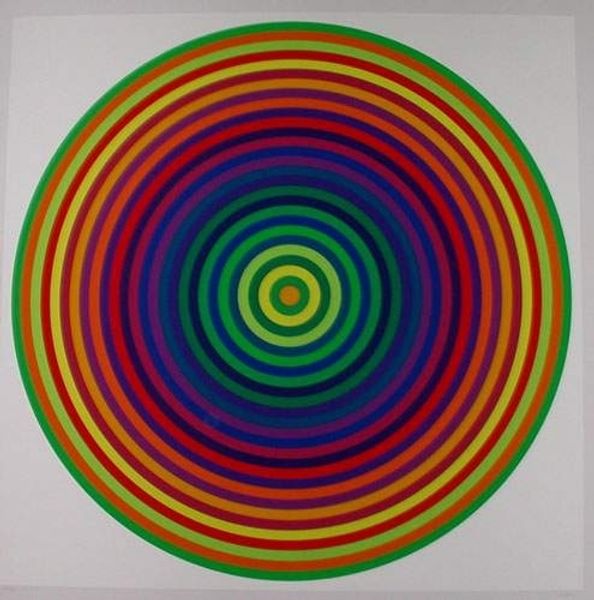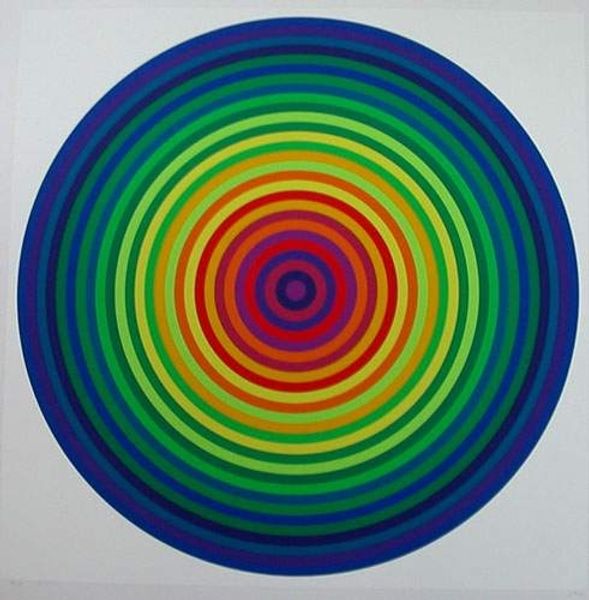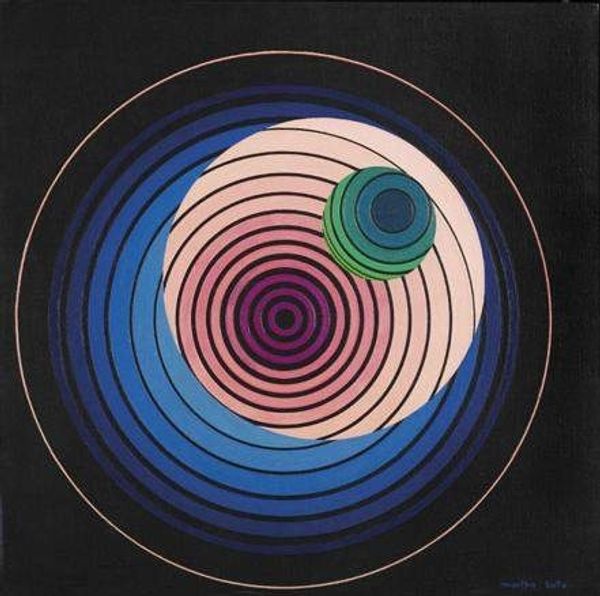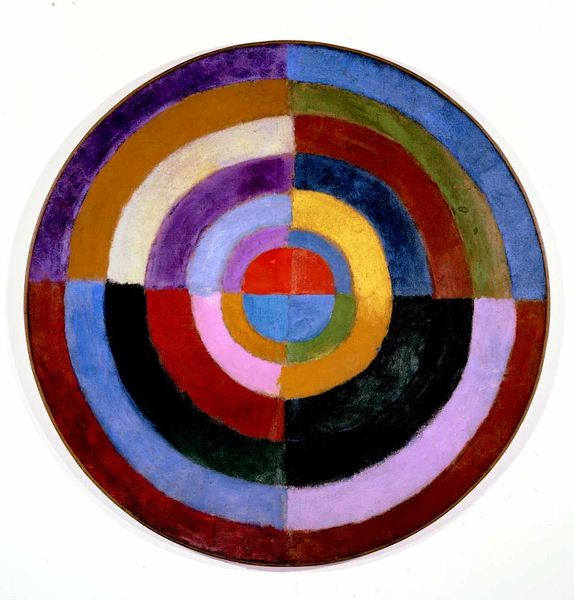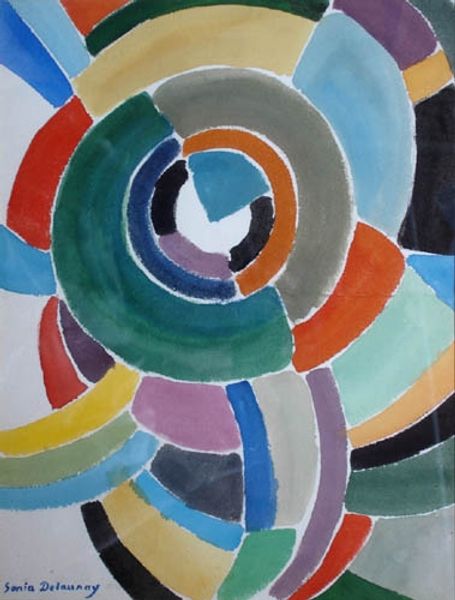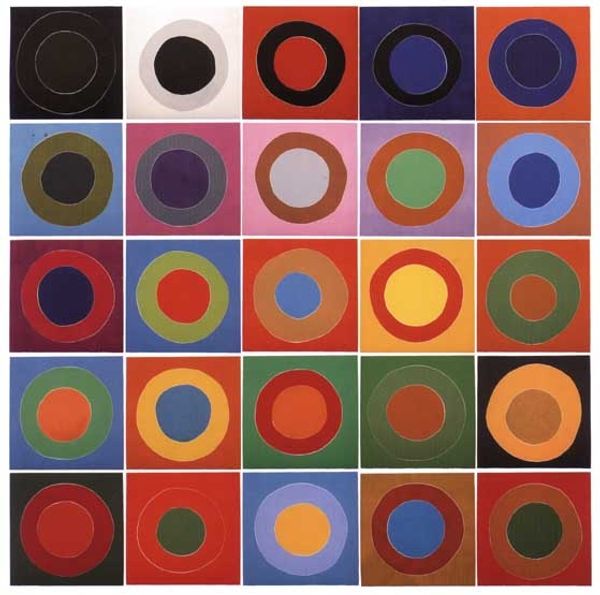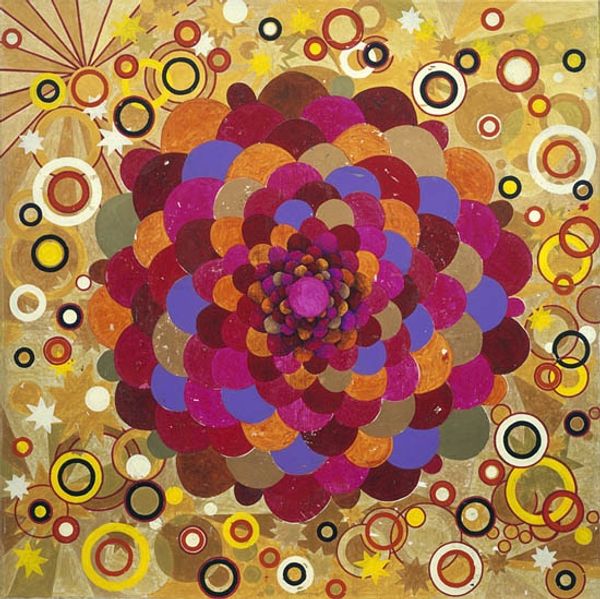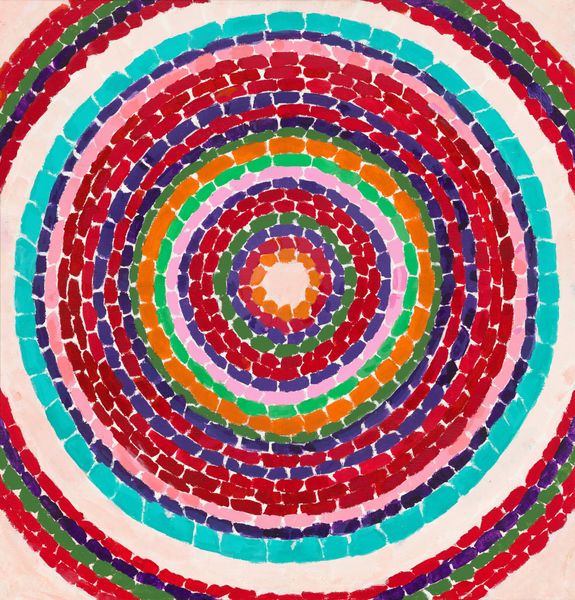
#
st-ives-school
Copyright: Terry Frost,Fair Use
Curator: Terry Frost's "Spirals," painted in 1991, presents us with an array of swirling patterns executed in acrylic. The composition divides the canvas into numerous smaller squares, each containing variations on the central spiral motif. Editor: My immediate reaction is of vibrant energy, contained within these geometric forms. The spiral, repeated in different colors and scales, gives off a rhythmic, almost hypnotic feeling. Curator: Frost, associated with British abstract expressionism, often explored the interplay between geometric shapes and color to evoke emotional responses. Works like this were influenced by social and political transformations around him—particularly regarding the changing nature of representation in a rapidly modernizing society. The spiral can be viewed as a reaction to a more unstable cultural moment. Editor: Formally, the contrasting colors within each spiral—reds, blues, greens, yellows—intensify the dynamic movement. It’s an intriguing exercise in controlled chaos, where the rigidity of the grid paradoxically amplifies the fluidity within each contained swirl. Note also how the squares containing individual spirals, surrounding the centralized vortex of interconnected lines, draw your eye. Curator: Right. The grid format also reflects modernism's preoccupation with industrial organization and rationalism, but subverted here by the organic form of the spirals themselves. What seems to be a straightforward composition reveals something messier about representation. It asks important questions: Can abstraction contain emotion and social tension? Does the tension between geometric order and free, swirling patterns tell a story about the period? Editor: Absolutely. Also note how the materiality enhances the energy; the acrylic appears almost impasto-like, building layers, drawing the eye deeper into the center. Color is form. Color dictates feeling. Curator: Seeing how viewers receive this work is compelling because art reflects its socio-political time and prompts these sorts of investigations into artistic purpose and design. Editor: This kind of visual tension is very much how painting speaks its particular language. It stays with you long after you’ve left the gallery.
Comments
No comments
Be the first to comment and join the conversation on the ultimate creative platform.
